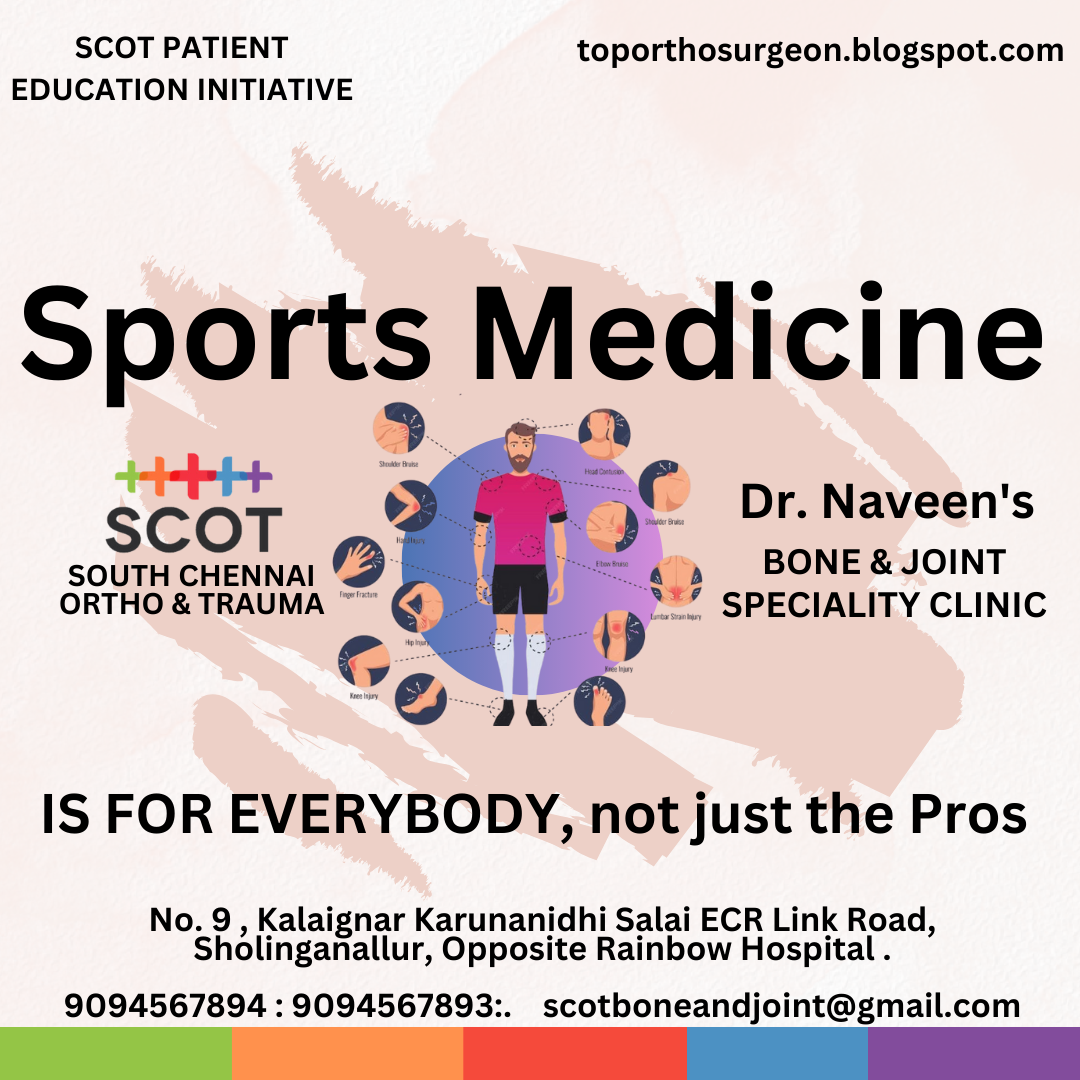Beyond the Playing Field: Sports Medicine and Arthroscopy for Everyone
While the terms "sports medicine" and "arthroscopy" might conjure images of professional athletes recovering from high-impact injuries, the truth is, these fields offer a wealth of benefits for people of all activity levels.
What is Sports Medicine?
Sports medicine is a branch of medicine focused on preventing, diagnosing, and treating injuries to the musculoskeletal system – muscles, bones, ligaments, tendons, and nerves. It goes beyond just treating injuries; sports medicine physicians also emphasize injury prevention, rehabilitation, and promoting overall musculoskeletal health.
Why is Sports Medicine Important for Everyone?
Here's why sports medicine isn't just for athletes:
- Weekend Warriors: Whether you're a cycling enthusiast or a pickleball champion, sports medicine specialists can help you prevent overuse injuries, optimize your training, and recover faster from minor tweaks.
- Daily Activities: Even everyday activities can lead to aches and pains. Sports medicine physicians can diagnose the cause, recommend non-surgical treatments like physical therapy, and create personalized exercise programs to keep you moving comfortably.
- Chronic Conditions: Sports medicine plays a role in managing chronic conditions like arthritis, osteoporosis, and back pain. Specialists can create treatment plans to manage pain, improve mobility, and maintain an active lifestyle.
What is Arthroscopy?
Arthroscopy is a minimally invasive surgical procedure that allows surgeons to diagnose and treat joint problems using a small camera and specialized instruments inserted through tiny incisions.
Benefits of Arthroscopy for Everyone:
Arthroscopy offers significant advantages over traditional open surgery:
- Reduced Pain: Smaller incisions translate to less pain and faster recovery times.
- Shorter Hospital Stays: Arthroscopic procedures are often outpatient, allowing you to return home the same day.
- Improved Recovery: Minimally invasive techniques promote faster healing and a quicker return to daily activities.
Who Can Benefit from Arthroscopy?
While athletes commonly undergo arthroscopy for ligament repairs or meniscus tears, it's a valuable tool for a broader population:
- Rotator Cuff Repair: Arthroscopy is a common treatment for rotator cuff tears, a shoulder injury that can affect people of all ages.
- Knee Surgery: Arthroscopy can address torn ligaments, cartilage damage, and other knee problems in both athletes and non-athletes.
- Joint Debridement: Arthroscopy can be used to remove inflamed tissue or bone fragments from joints, improving mobility and reducing pain for various conditions.
- Carpal Tunnel Release: For patients suffering from carpal tunnel syndrome, a compressed median nerve in the wrist, arthroscopy offers a minimally invasive approach to release the ligament pressing on the nerve and alleviate pain and numbness.
- TFCC Tear Repair: Triangular Fibrocartilage Complex (TFCC) tears, which can cause wrist pain and instability, can sometimes be repaired arthroscopically, depending on the severity of the tear.
The Takeaway
Sports medicine and arthroscopy are valuable tools for keeping people of all ages active and healthy. If you're experiencing joint pain, limited mobility, or want to optimize your performance, consulting a sports medicine physician can be a game-changer, even if your "game" is simply chasing after your grandkids in the park.
Dr. Naveen Chowdary Tummala
SCOT : Naveen's Bone and Joint Clinic, Sholinganallur
9094567893, 9094567894

Comments
Post a Comment